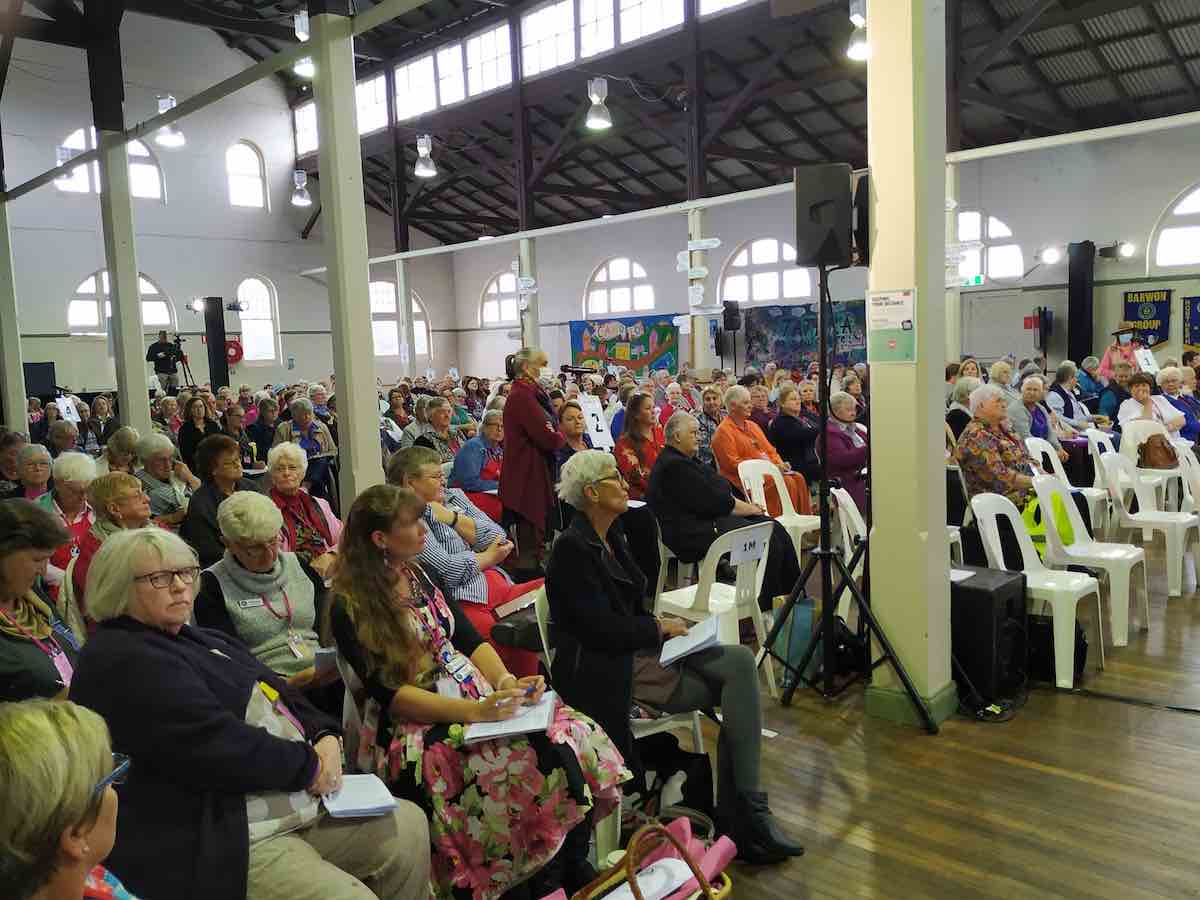Large-scale solar development in regional New South Wales has gained an unexpected new opponent, with the state chapter of Country Women’s Association of Australia voting to call on governments to prevent solar farms from being developed in prime agricultural areas.
The motion was put by the Jindera branch of the NSW CWA, at the Association’s 99th annual state conference in Bega last week. The motion was carried by a two-thirds majority of the 250-strong crowd.
In comments to The Land, last week, CWA NSW president Stephanie Stanhope said members were concerned that a number of solar farms being proposed for regional NSW were “foreign-owned” and being built on land that was better used for farming.
“There is a line there and the government has to decide where that line is,” she told the paper. “I don’t think we have really looked at what all the impacts are.
“Do we need to preserve prime [agricultural] land for food production or face a future where we have to import our own food? A lot of these solar farms are foreign owned. Landholders quite often don’t have a say and some will sell because they want to get out and retire. This is a real fear we will lose our prime agricultural land,” she said.
The CWA is a formidable institution, which first formed in Australia in NSW almost 100 years ago, in 1922, and has a current membership of around 8,000 across 400 branches. And while its political clout is unclear these days, the vote against solar farms is – at the very least – a sign of growing community wariness in the face of booming development.
In NSW, the Berejiklian government’s Energy Roadmap announced late last year aims to drive investment in roughly 12GW of new wind and solar and 2GW of new storage projects, to replace the state’s ageing coal fleet while reducing emissions and costs for NSW consumers.
But as Australia’s wind industry has taught us – sometimes the hard way – community engagement and social licence will be key in rolling out such a huge amount of new capacity, much of it in regional areas, over a relatively short period of time.
As RenewEconomy reported last November, the largest solar farm in NSW – the 300MW Walla Walla project being developed by Saudi Arabia-based FRV north of Albury – faced an array of local objections ranging from the displacement of prime agricultural land, the potential “heat island” effect, biodiversity impacts, visual impacts, and socio-economic impacts.
Colin Kane, the director of environment planning for Greater Hume Council, also expressed concern about battery storage at other nearby solar projects, which he told the IPC “can melt down like a nuclear reactor if they get too hot” and present problems for the largely volunteer local firefighting resources.
And while some of the objections to large-scale solar development on agricultural land are highly debatable, the rising number of objections to solar projects cannot be denied – including from the CWA.
“The range of motions, across so many different areas, reflects the diversity of our membership and the issues of concern to their communities,” Stanhope said in a statement ahead of the conference.
“The CWA of NSW takes its advocacy role very seriously and once motions are formally endorsed by the membership, they will become part of our lobbying platform for the next 12 months.
“There are some interesting motions this year that will no doubt inspire some robust debate, but that is one of the strengths of our association: all points of view are welcome and can be discussed openly and honestly.”
Worryingly, the NSW CWA also voted down a motion put by the Bangalow branch to support the declaration of a climate emergency in recognition of the need for urgent action on climate change; and to urge all governments to act in line with net-zero emissions by 2050.
Three members spoke in opposition to the motion, essentially saying it was unnecessary and would achieve nothing. One member noted that scientists couldn’t do anything about stopping lightning from starting fires. The majority appeared to agree.
The one ray of hope from the Bega meeting, however, was the group’s vote in favour of a motion brought by the Tambar Springs branch, Namoi group, calling on the CWA to advocate for a just transition from coal and gas, which are in terminal decline, to low carbon-intensive industries.
Phew. Now it is up to the solar companies, and the politicians paving the way for the wholesale and rapid shift to renewable energy, to work with communities and ensure everyone’s concerns are being heard.








